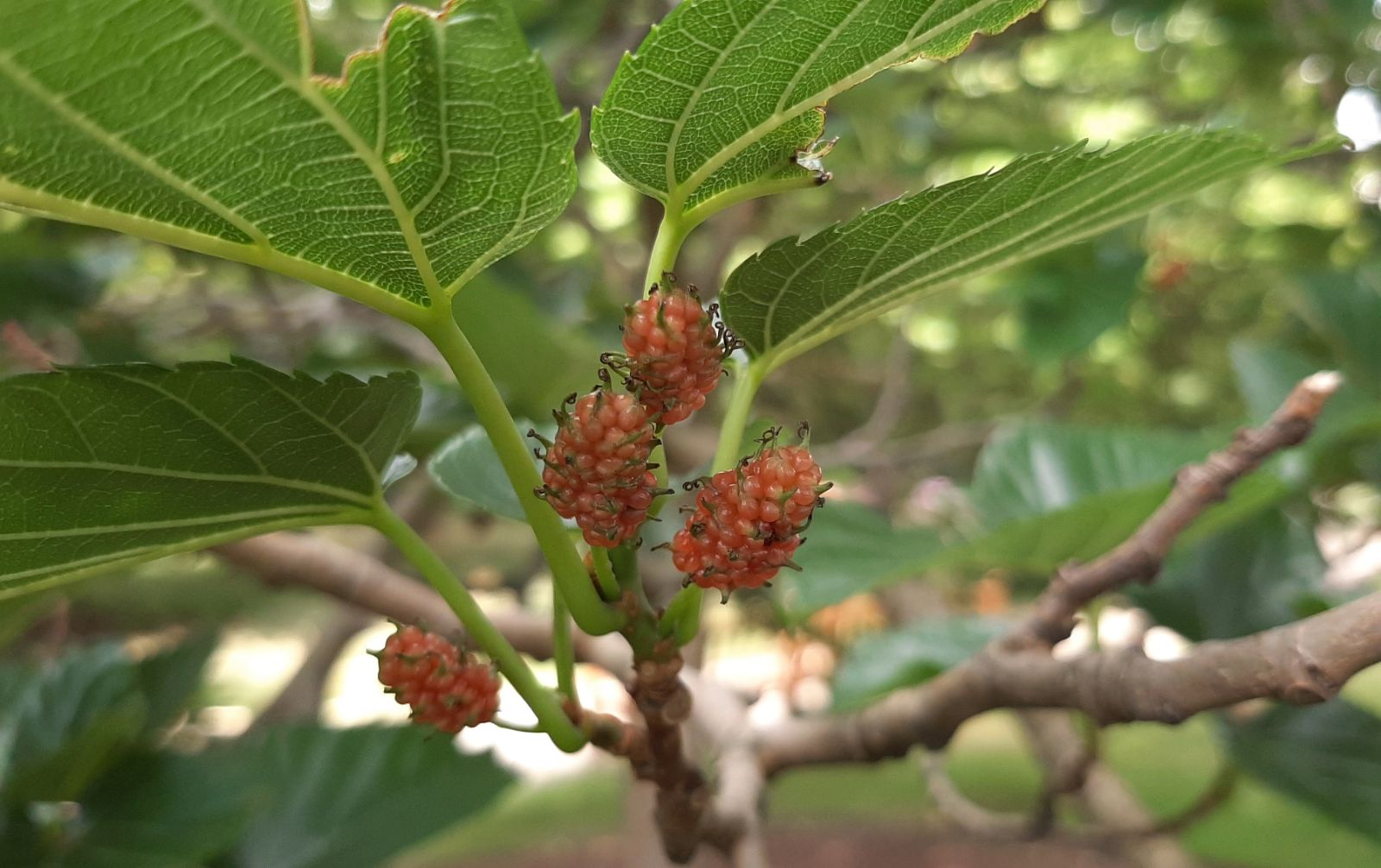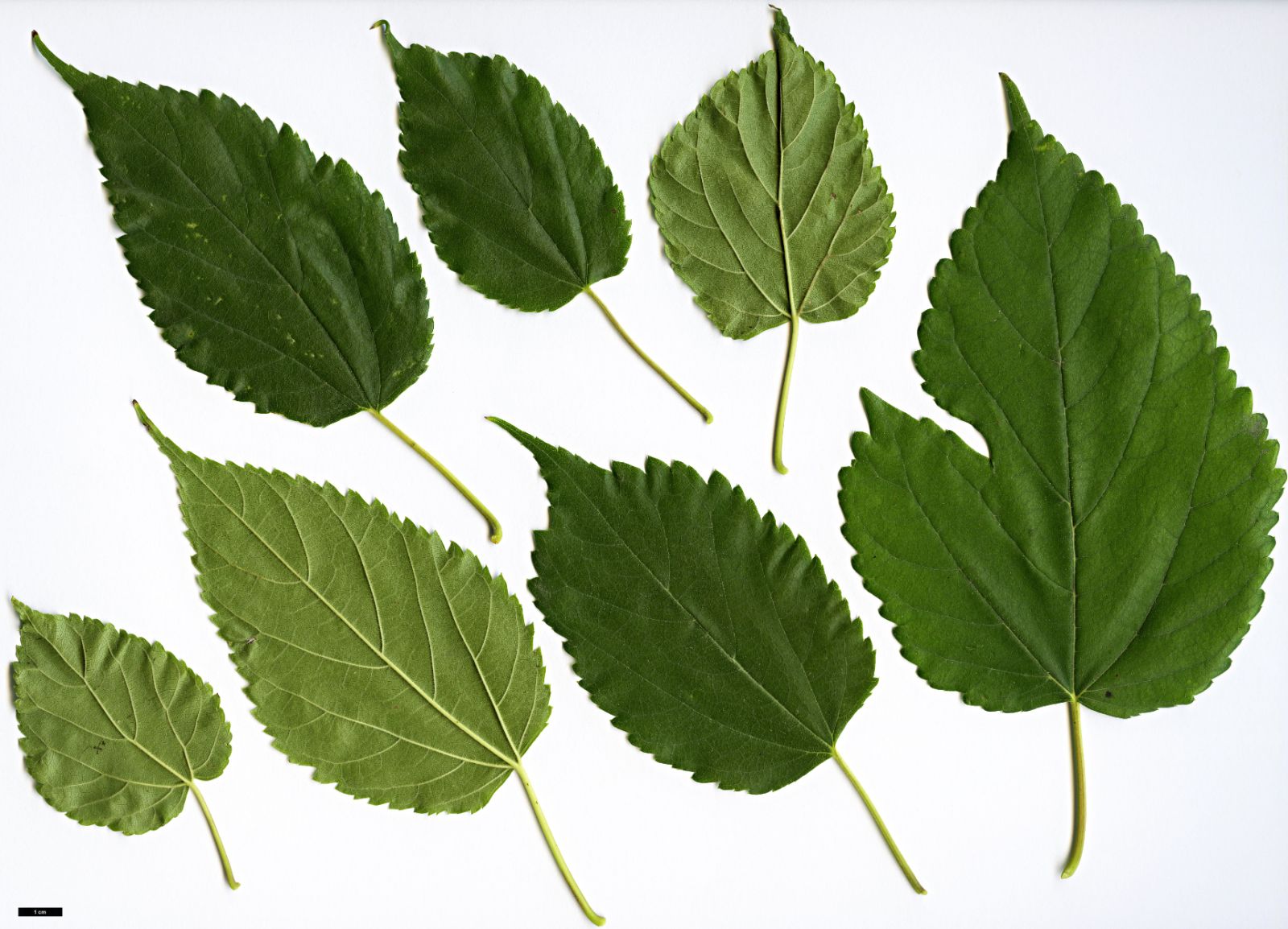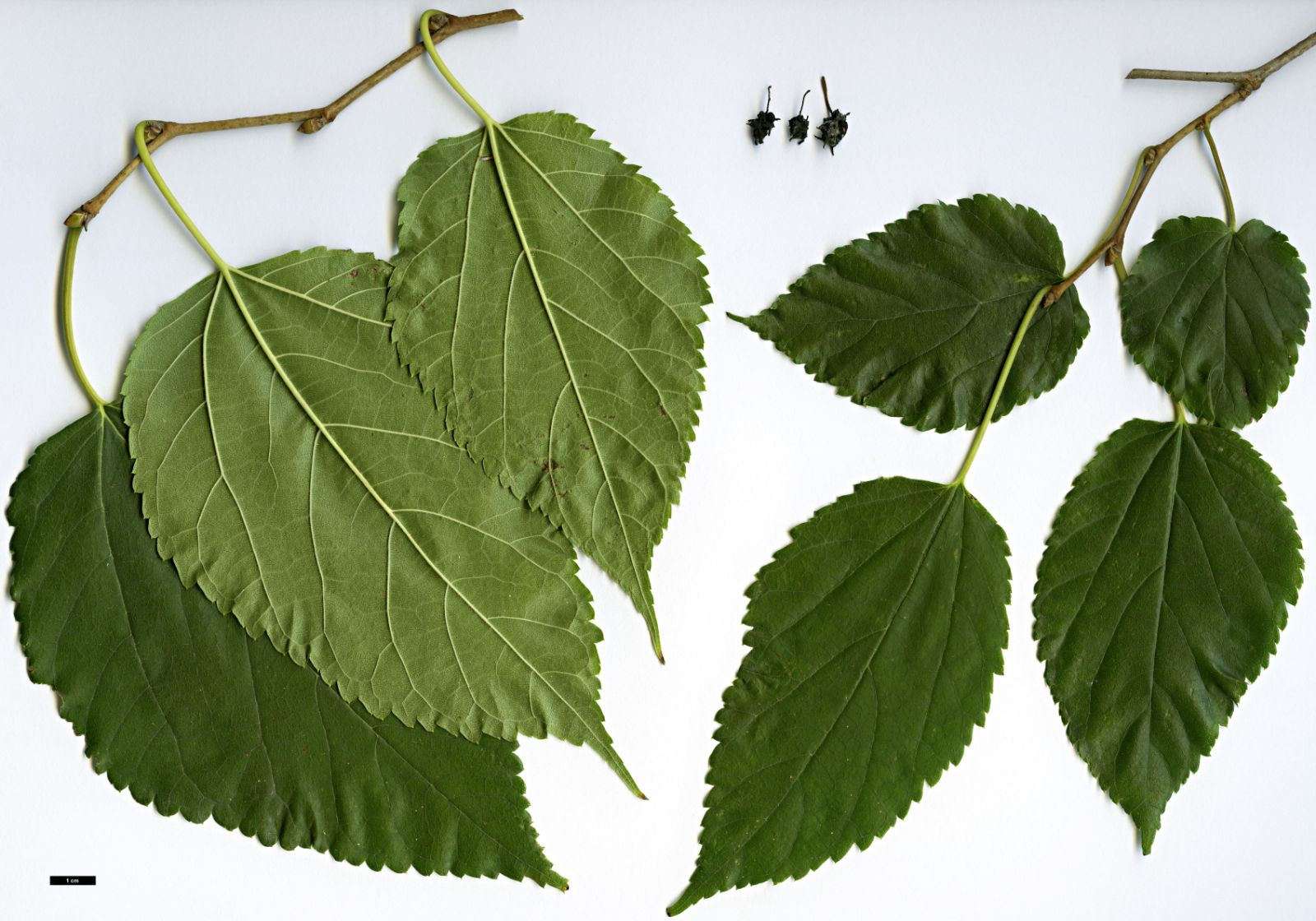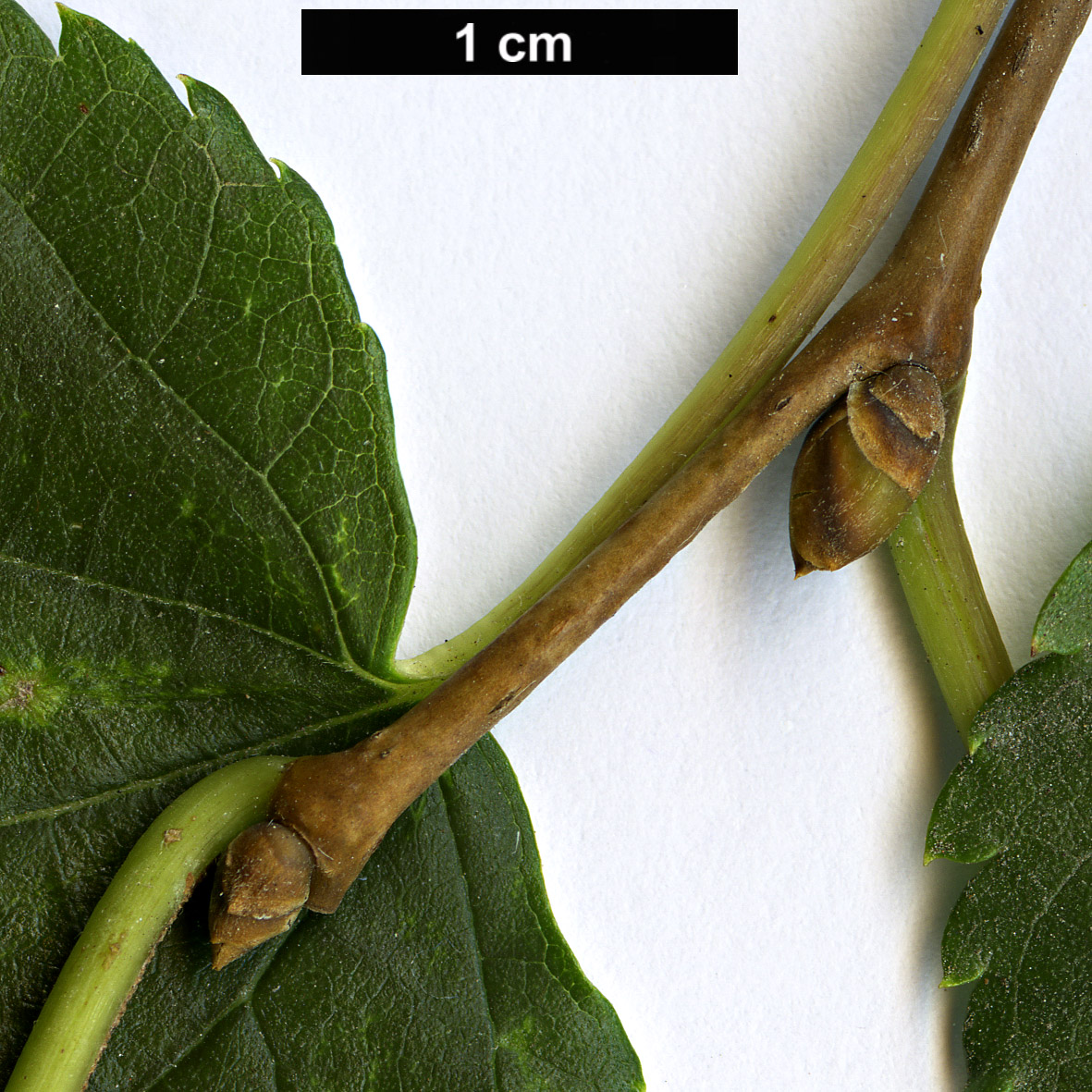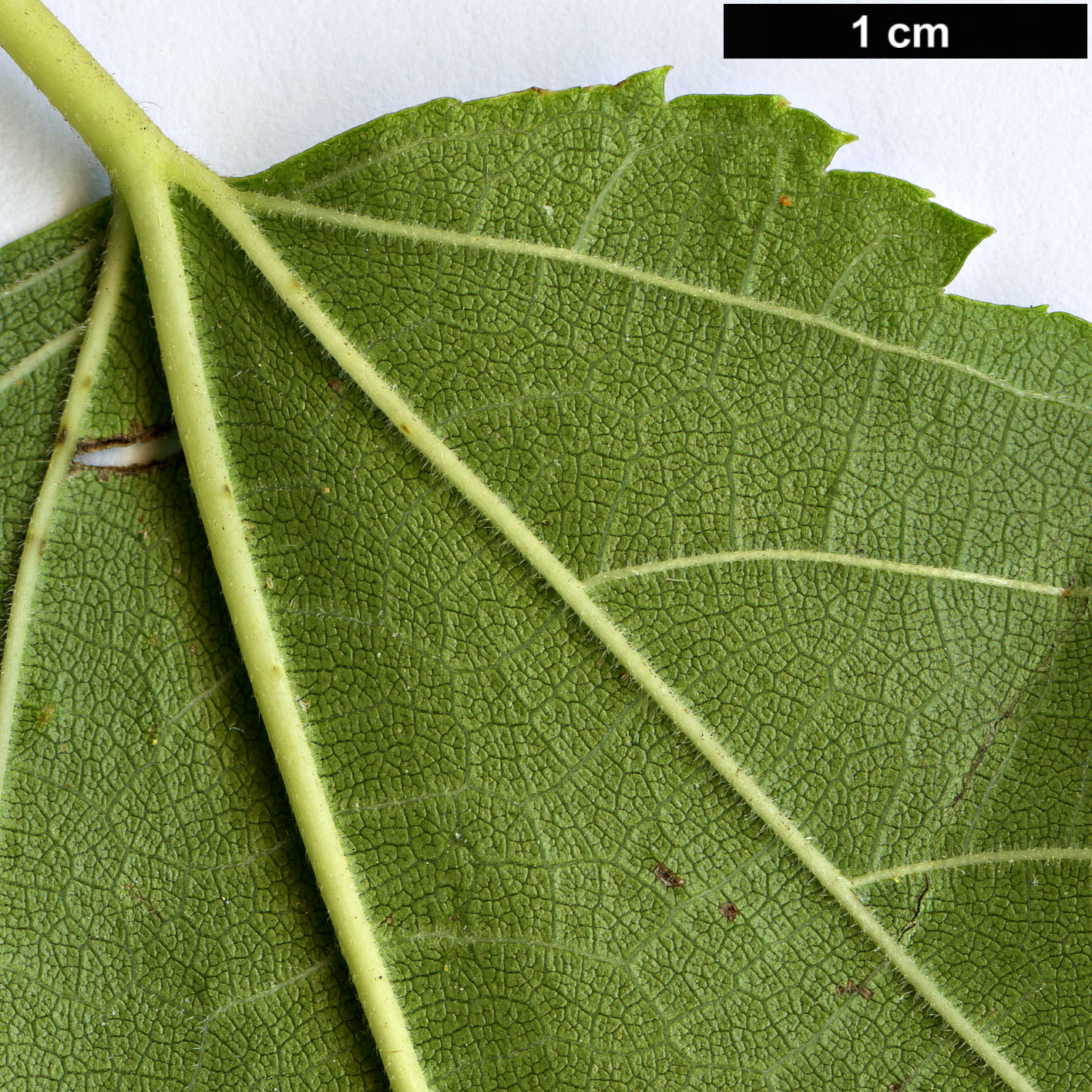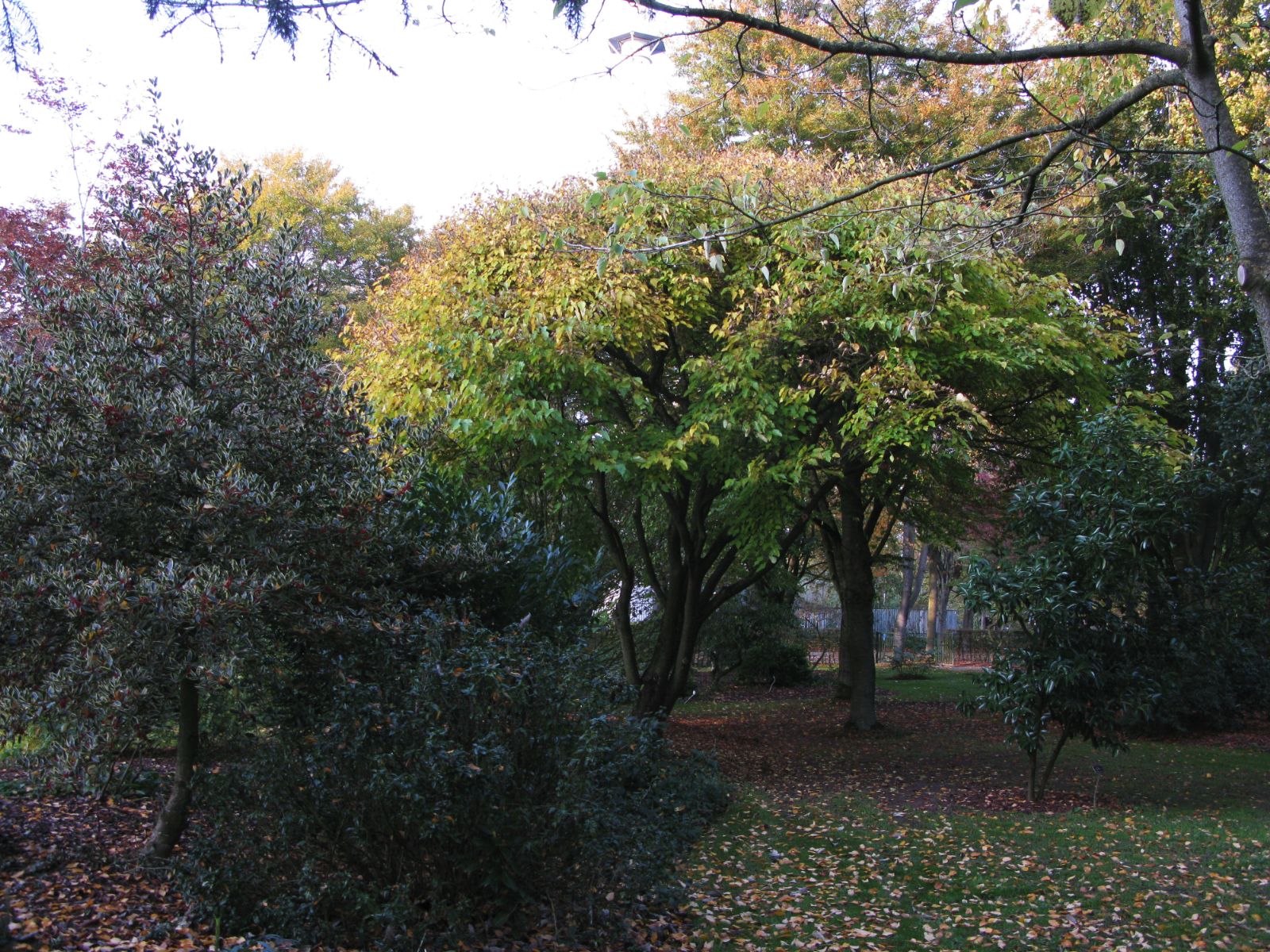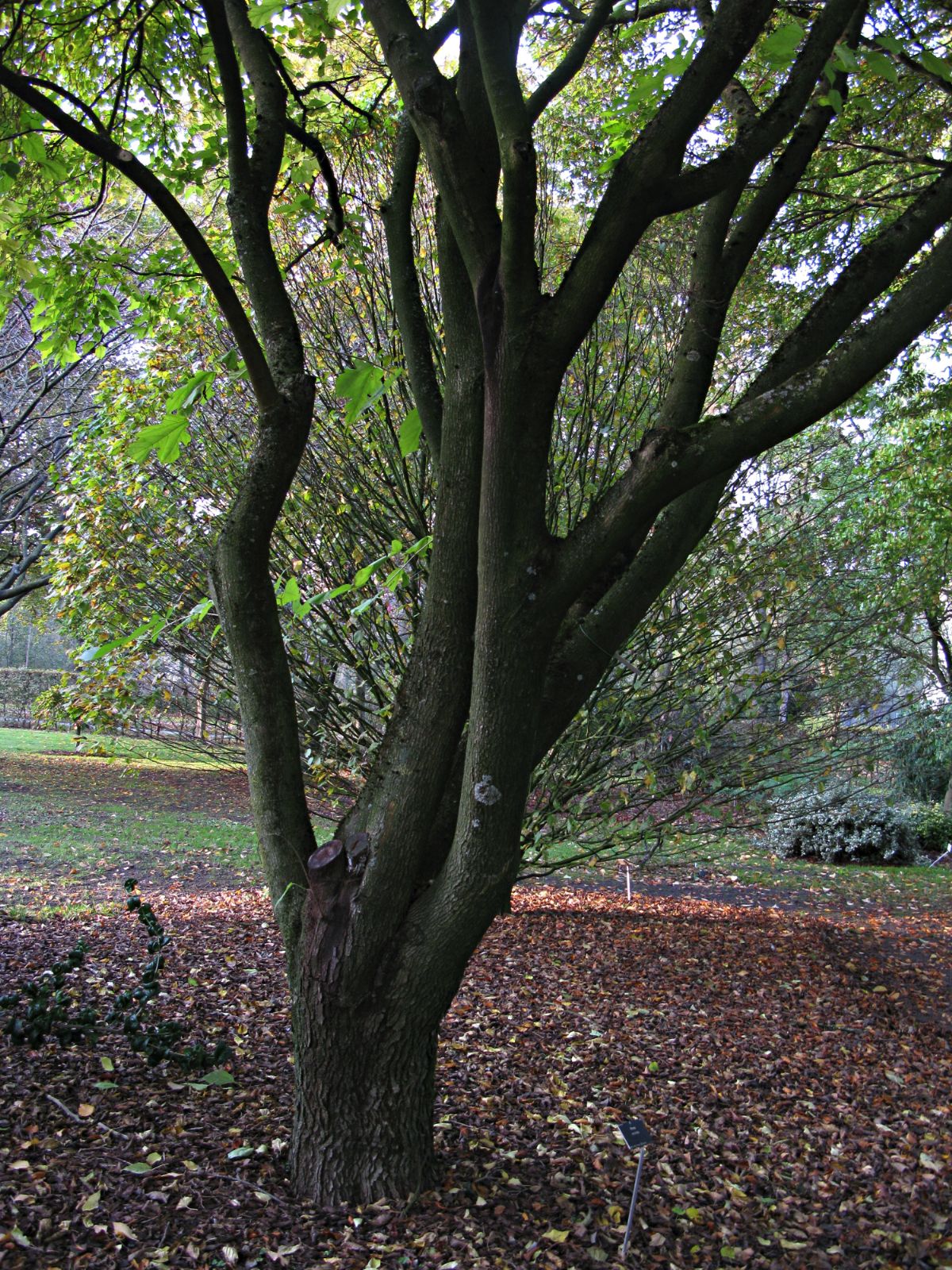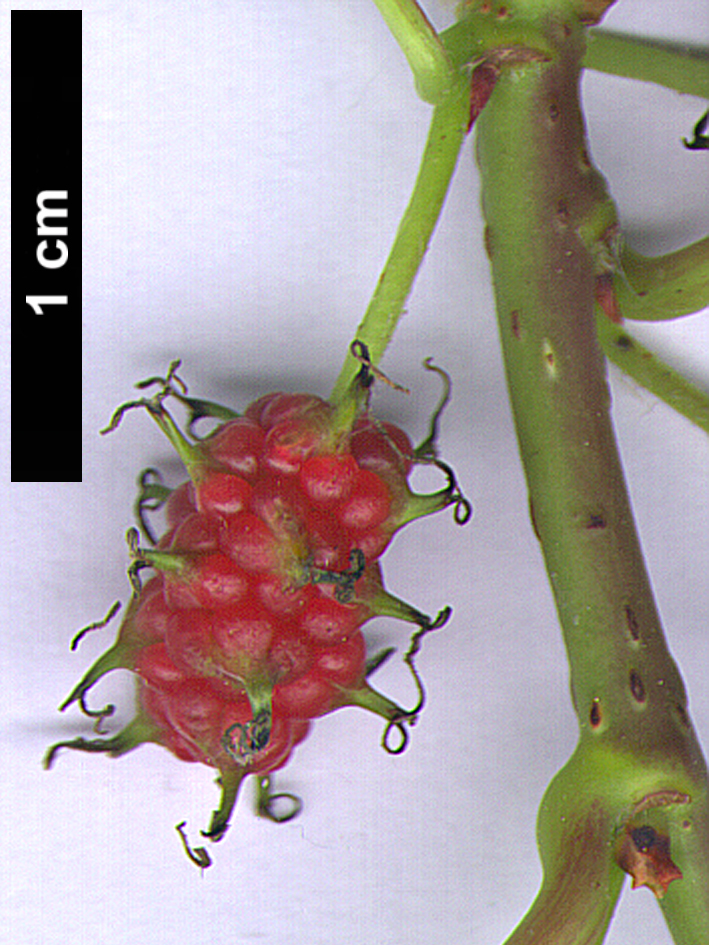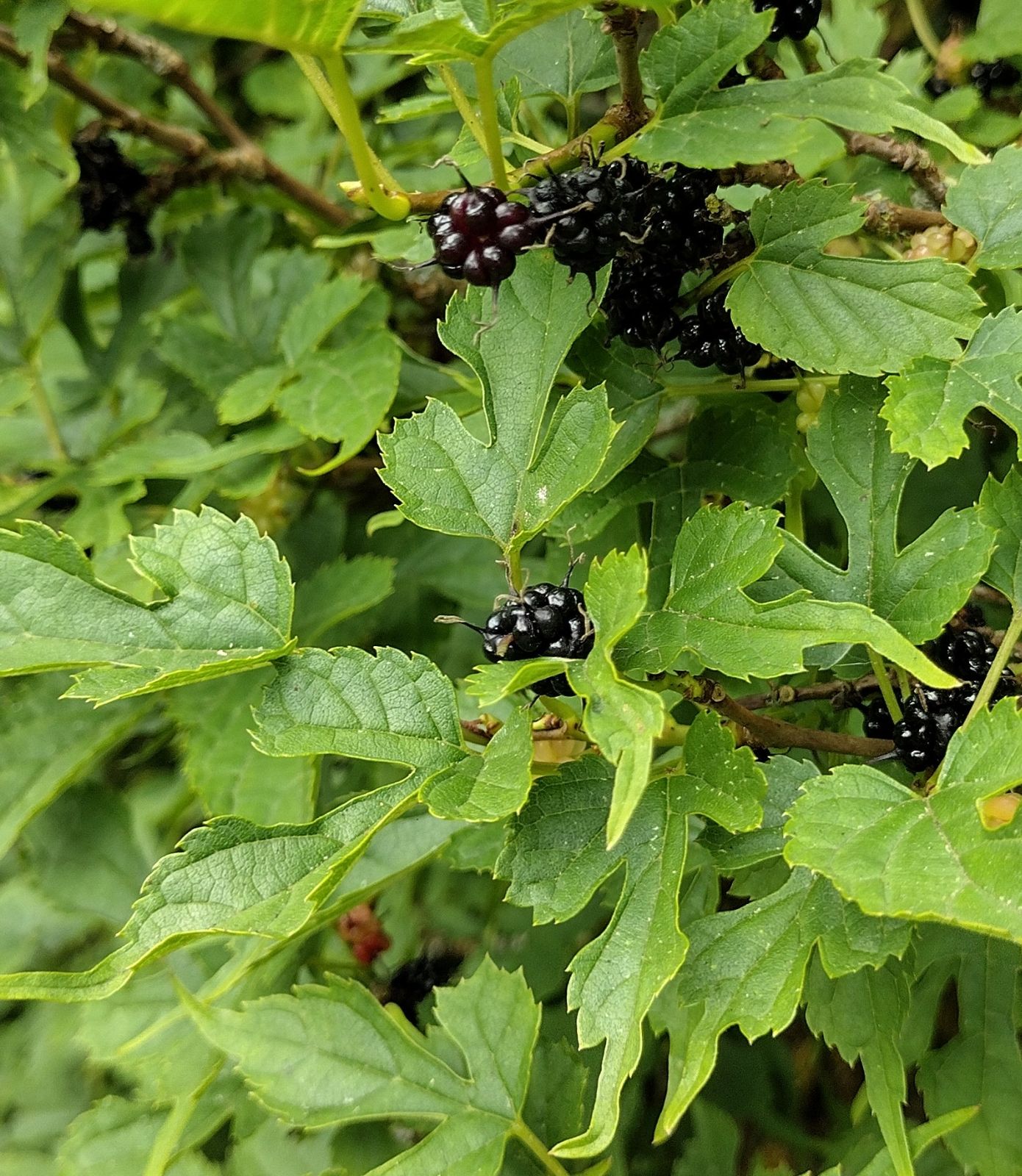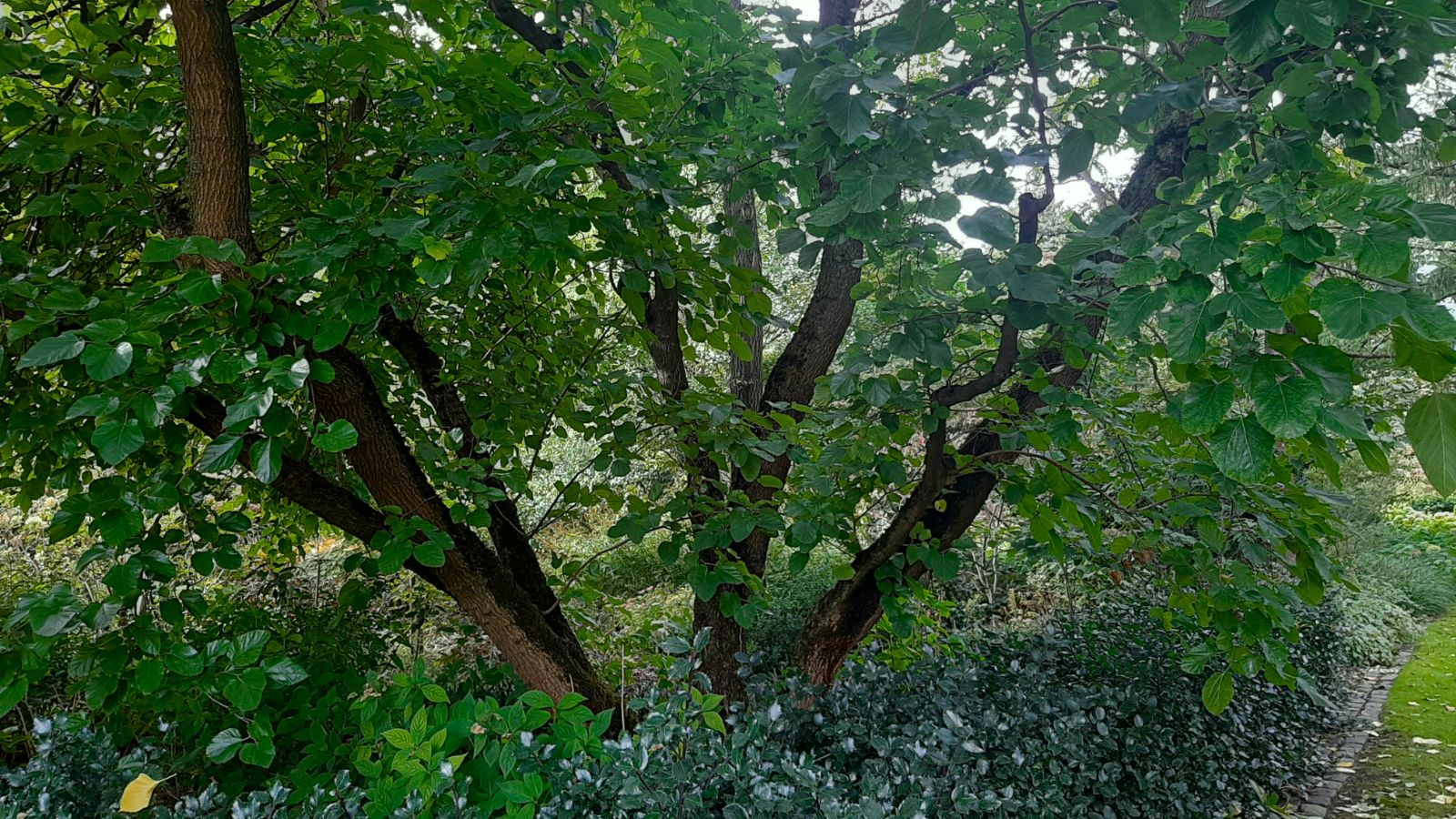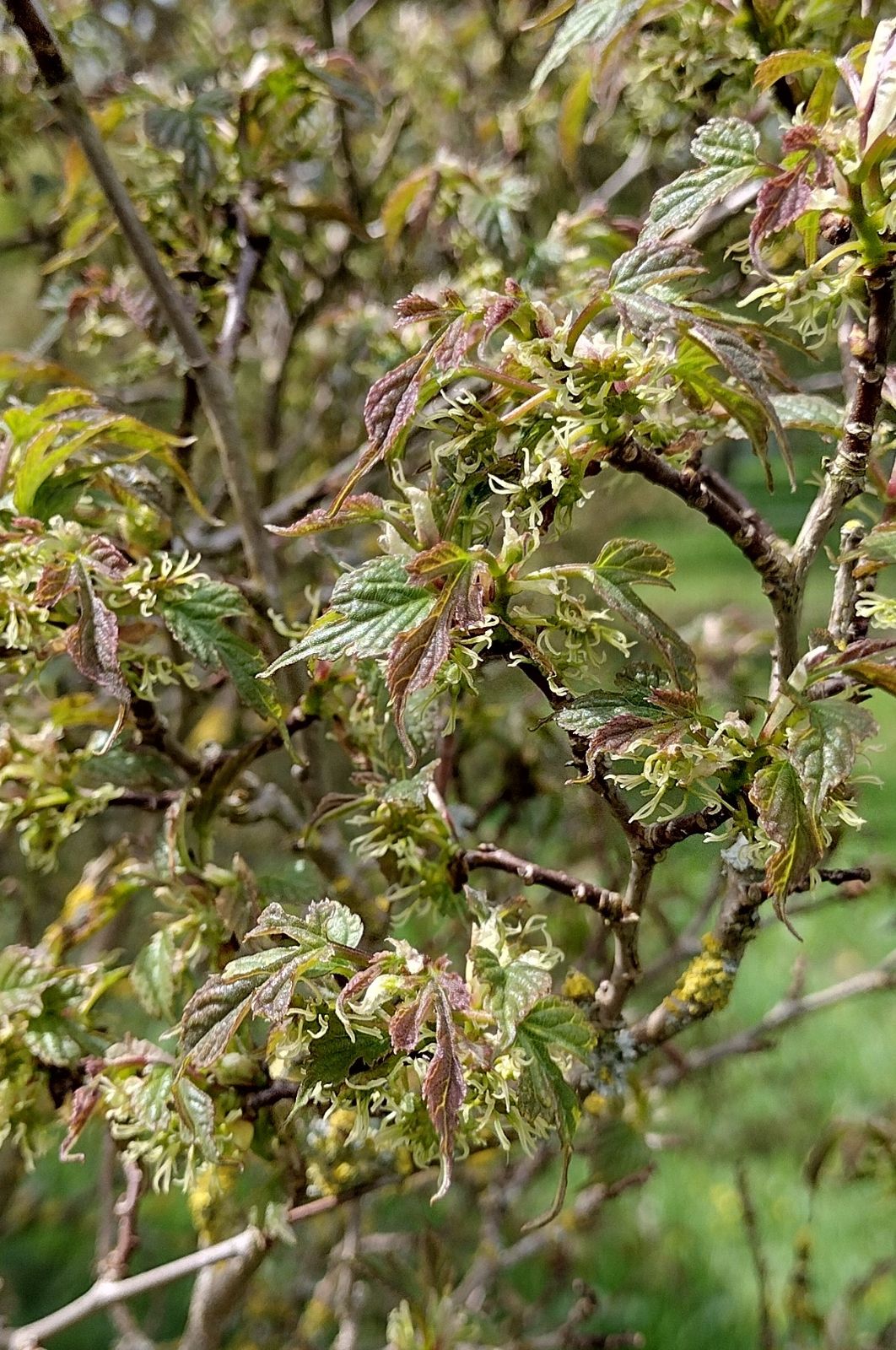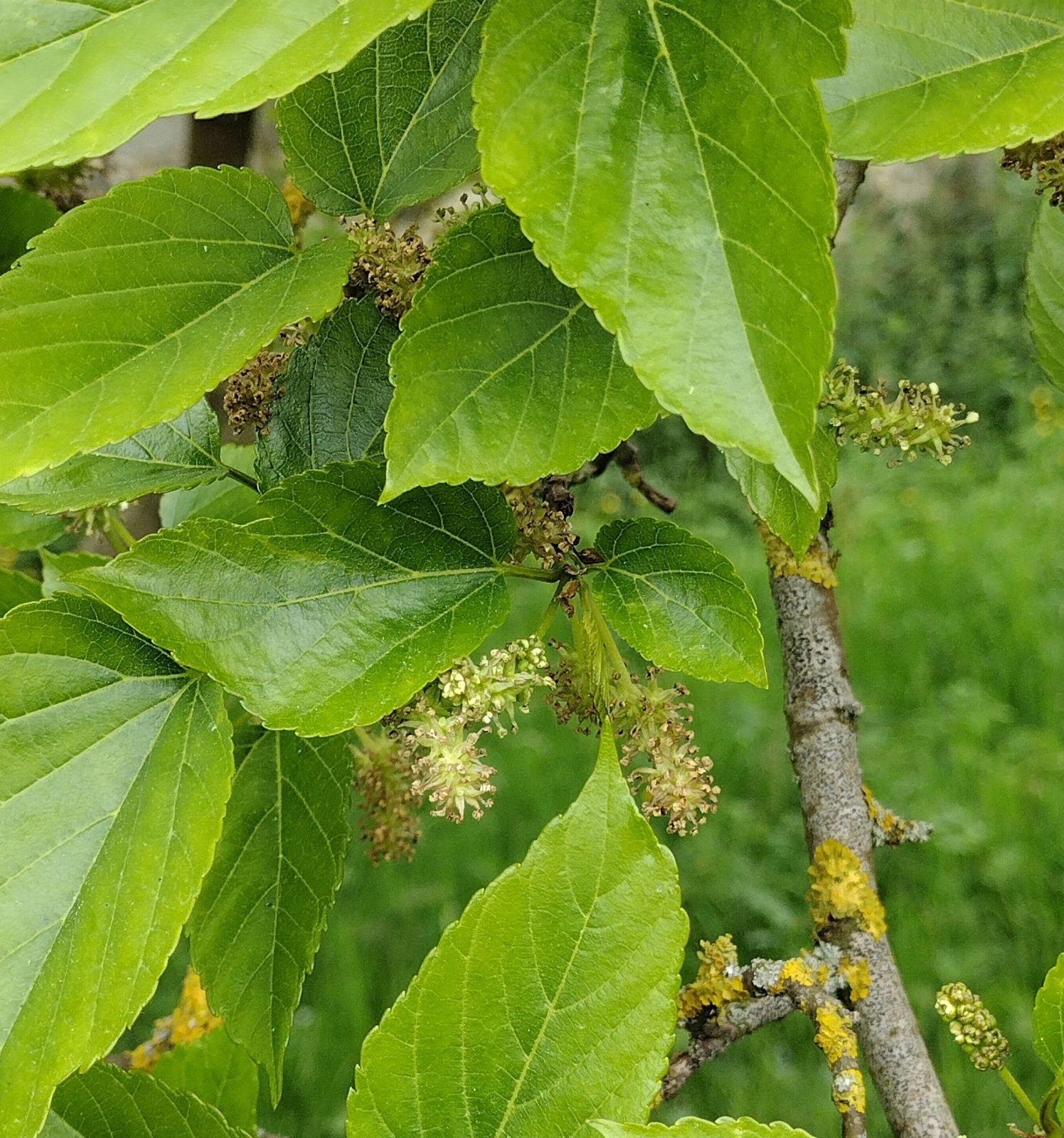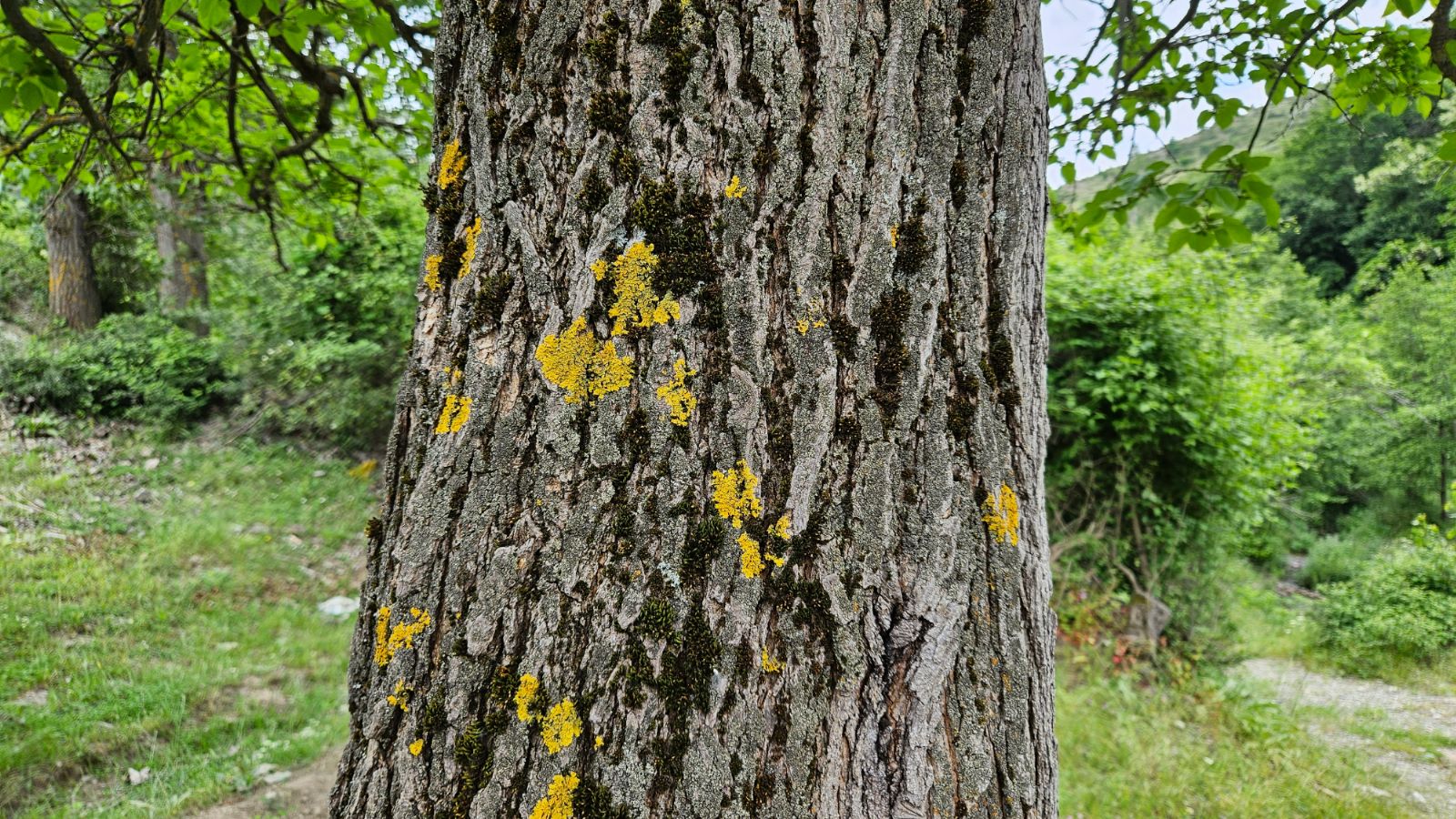Morus indica
Sponsor
Kindly sponsored by a member of the International Dendrology Society.
Credits
Tom Christian & Peter Coles (2022)
Recommended citation
Christian, T. & Coles, P. (2022), 'Morus indica' from the website Trees and Shrubs Online (treesandshrubsonline.
Genus
Common Names
- 鸡桑 (ji sang)
Synonyms
- Morus acidiosa Griffith
- Morus australis var. hachijoensis (Hotta) Kitam.
- Morus australis var. hastifolia (F.T. Wang & T. Tang ex Z.Y. Cao) Z.Y. Cao
- Morus australis var. incisa C.Y. Wu
- Morus australis var. inusitata (H. Lév.) C.Y. Wu
- Morus australis var. linearipartita Z.Y. Cao
- Morus australis var. oblongifolia Z.Y. Cao
- Morus bombycis Koidz.
- Morus cashmeriana Royle
- Morus caudatifolia Koidz.
- Morus cavaleriei H. Lév
- Morus cuspidata Wall.
- Morus expansa Raf.
- Morus formosensis Hotta
- Morus japonica Siebold
- Morus kagayame Koidz.
- Morus latifolia Poir.
- Morus longistylus Diels
- Morus mizuho Hotta
- Morus parvifolia Royle
- Morus rotundiloba Koidz.
- Morus stylosa Ser.
- Morus wallichiana Koidz.
Small trees or shrubs to 7 m. Bark greyish brown. Branchlets glabrous, or pubescent initially; lenticels rounded to eliptic. Winter buds conic to ovoid, large. Stipules linear-lanceolate. Leaves lanceolate to broadly ovate, simple to deeply palmately lobed (lobing most prominent and variable on young shoots), 5–14 × 1–12 cm; upper surface scabrous with a dense covering of short hairs; lower surface with a sparse covering of thick hairs; base cuneate to cordate; margin serrate or entire; apex acute to caudate; petiole 1–1.5 cm. Male inflorescences 1 per node, 1–1.5 cm, pubescent, peduncle 0.2–0.5 cm; male flowers with green, ovate calyx lobes, anther yellow. Female inflorescences 1 per node, 0.5–1 cm, densely white pubescent, peduncle 0.2–0.5 cm; female flowers with dark green, oblong calyx lobes, style 0.2–0.8 cm, stigma 2-branched, abaxially pubescent. Syncarp maturing red to dark purple, short cylindric, c. 0.5–1.5 × 0.5 cm. Flowering early spring, fruiting spring to early summer. (Wu, Zhou & Gilbert 2003; Razdan & Dennis Thomas 2021).
Distribution Bangladesh Bhutan Myanmar China India Japan North Korea South Korea Laos Nepal Vietnam Taiwan
Habitat Limestone areas, forest margins, mountain slopes, fallow land, scrub in valleys; 500–2000 m asl.
RHS Hardiness Rating H4
Taxonomic note Plants of the World Online (2022) gives an extensive and somewhat complex list of synonyms for this species, including six obscure varieties of the otherwise familiar name M. australis Poir. (var. hachijoensis, var. hastifolia, var. incisa, var. inusitata, var. linearipartita, and var. oblongifolia) but the same resource considers M. australis Poir. itself to be a synonym of Broussonetia papyrifera L.. Razdan & Dennis Thomas (2021) accept M. australis Poir. and treat M. indica L. as a synonym, but as the Linnean name is older, this appears to be erroneous. Further research is required to resolve this issue.
Morus indica is one of the native mulberry species found in northern India and Pakistan, along with M. serrata, M. macroura, and the long-cultivated M. alba (Ravindran et al. 1997). Northern India and Pakistan have ancient traditions of silk production (Tussah, Muga and Eri silks) using wild, non-Bombyx moths feeding on a number of forest trees, which probably include M. indica. This ‘wild’ silk is widely used for domestic consumption in India. Like other species in the genus, the bark, leaves and fruit of M. indica have proven value in lowering fasting blood sugar levels in patients with Type 2 diabetes (Andallu et al. 2001).
Most cultivated mulberries in India belong to M. alba or M. indica, with both providing leaves to feed silkworms in commercial sericulture, especially now in the southern states of India; consequently, M. indica is possibly the most widely cultivated species after M. alba. Both have been the subject of intensive selection from open pollination, controlled hybridization, and mutation breeding in several countries (Sánchez 2000).
M. indica’s native range extends from the Indian subcontinent north-eastward, across appropriate regions of south east Asia and southern China to the Korean peninsula and the southern parts of the Japanese archipelago (Plants of the World Online 2022). Morus kagayamae Koidz. was at one time considered distinct based on minor details of the female flowers and the leaves, and an isolated distribution in the Izu Archipelago off the southern coast of Honshu, Japan (Bean 1981). It is now generally considered to fall within the parameters of M. indica. Wilson collected material from Hachijō-jima in April 1917 (W 8373) which Bean discussed under M. kagayamae; in Bean’s time there were trees at Kew ‘almost certainly’ raised from Wilson’s collection ‘whose leaves usually colour bright yellow in the autumn’ (Bean 1981). It isn’t clear whether this material is still extant; plants bearing the name M. kagayamae are extant at the Arnold Arboretum, but their provenance is uncertain (Arnold Arboretum 2022).
After M. alba, M. indica is probably the most widely grown of the Asian mulberries in collections, though it is usually labelled as one of its many synonyms, often M. australis and M. bombycis. There are trees (labelled M. bombycis) at Sandling Park, Kent (12 m × 32 cm dbh in 2018) and at the Yorkshire Arboretum (9 m × 38 cm in 2018), both in England (Tree Register 2022). Others, labelled M. kagayamae, grow in Capbreton, France (11.4 m × 44 cm dbh in 2021) and on the Grenzallee, Potsdam, Germany (11 m × 25 cm dbh in 2020) (monumentaltrees.com 2022). It must be stressed that the identity of all these trees is taken on trust. Nevertheless, when several characters are considered together M. indica is relatively distinct, combining a scabrous upper leaf surface with elongated styles which protrude from the fruit. The first character helps to differentiate it from M. alba, the second from M. nigra.
'Charlotte Russe'
Synonyms / alternative names
Morus rotundiloba 'Matsunaga'
Morus 'Matsunaga'
Morus 'Waisei-kirishima-shikinari'
RHS Hardiness Rating: H5
This is a small plant with a big identity crisis. Winner of the 2017 ‘Plant of the Year’ award at the Chelsea Flower Show, where it was exhibited under the name ‘Waisei-kirishima-shikinari’, this mulberry from Japan is a diminutive selection, growing to 1.5–2.5 m tall and broad, though it may be kept smaller by containerising or pruning. Tough, hardy and reliable, it produces copious fruit from a young age and is suitable for smaller spaces (rhs.org.uk).
It is in circulation under at least three cultivar or trade names, which are sometimes listed under species names including M. nigra and M. rotundiloba (= M. indica). Given its Japanese origin, it seems most likely to belong to M. indica, and we tentatively include it here pending further information.
'Unryu'
Common Names
Contorted Mulberry
Synonyms / alternative names
Morus alba 'Contorta'
Morus alba 'Tortuosa'
Morus alba 'Spiralis'
Morus alba 'Spirata'
The spectacular Contorted Mulberry is a vigorous plant in areas with hot summers. Ultimately a tree to c. 10 m and often wider, it is perhaps among the largest contorted cultivars of woody plants: Larry Hatch recommends allowing 200 square feet to do it justice (Hatch 2021–2022). According to Bolscher & van der Wurff (1998) the leaves are large and unlobed and it is a female clone but fruit set is rare. The great dendrologist J.C. Raulston was a huge fan of Contorted Mulberry: he obtained material ‘from a California plant collector in 1981’ (Andrews, Feltwell & Lane 2012) and spent the 1980s giving away ‘hundreds if not thousands of rooted stem sections’ (Hatch 2021–2022). Likening it to Corylus avellana ‘Contorta’, Raulston advocated cutting the stems for floral displays and decoration (Andrews, Feltwell & Lane 2012).
Contorted Mulberry seems to be a relatively recent introduction to the west, but it has been suffering an identity crisis since day one. The extent to which its (western) history is known seems to hinge on whether or not you accept that ‘Unryu’ and ‘Spirata’ are the same thing: the balance of opinion seems to be stacked in favour of this view. Certainly Jacobson (1996) and Hatch (2021–2022) both treat them as identical, preferring the name M. bombycis ‘Unryu’, while Bolscher & van der Wurff (1998) and the authors of The Queen’s Mulberries (Andrews, Feltwell & Lane 2012) also treat them as identical, but prefer the name M. alba ‘Spirata’. ‘Spirata’ was introduced by H.J. van de Laar who spotted it in a Kyushu nursery in April 1979 where it was labelled M. latifolia ‘Spirata’; it was quickly imported to Europe and distributed under this name from c. 1983 (Bolscher & van der Wurff 1998).
Anybody still reading might reasonably ask why, if the plant left Japan labelled ‘Spirata’, did this name not stick, even if the parentage has subsequently been shown to differ? Hatch offers a theory that as no record of this name’s publication can be traced that predates 1959, the cultivar name in Latin form is probably invalid. Nevertheless, the origin of ‘Unryu’ (‘twisted’ in Japanese) is unclear, but it appears to have been attached to material imported into North America under M. bombycis (Jacobson 1996), perhaps by Raulston’s mysterious California collector. The limited evidence available does suggest that the name ‘Unryu’ was applied to North American stock, whereas ‘Spirata’ has been retained in Europe, and if growers on those respective continents believed they were dealing with similar selections of two different species (M. bombycis and M. latifolia respectively) the continued use of two cultivar names becomes understandable. In the taxonomy followed here both M. bombycis and M. latifolia are synonyms of M. indica. This leaves only the question of whether Contorted Mulberry belongs to M. alba or M. indica: Hatch (2021–2022) cites the distinctive style as evidence the cultivar belongs to what is here treated as M. indica, and so we treat the Contorted Mulberry accordingly, opting to use the name ‘Unryu’, fully appreciative this will not be the final word on this contorted problem.


